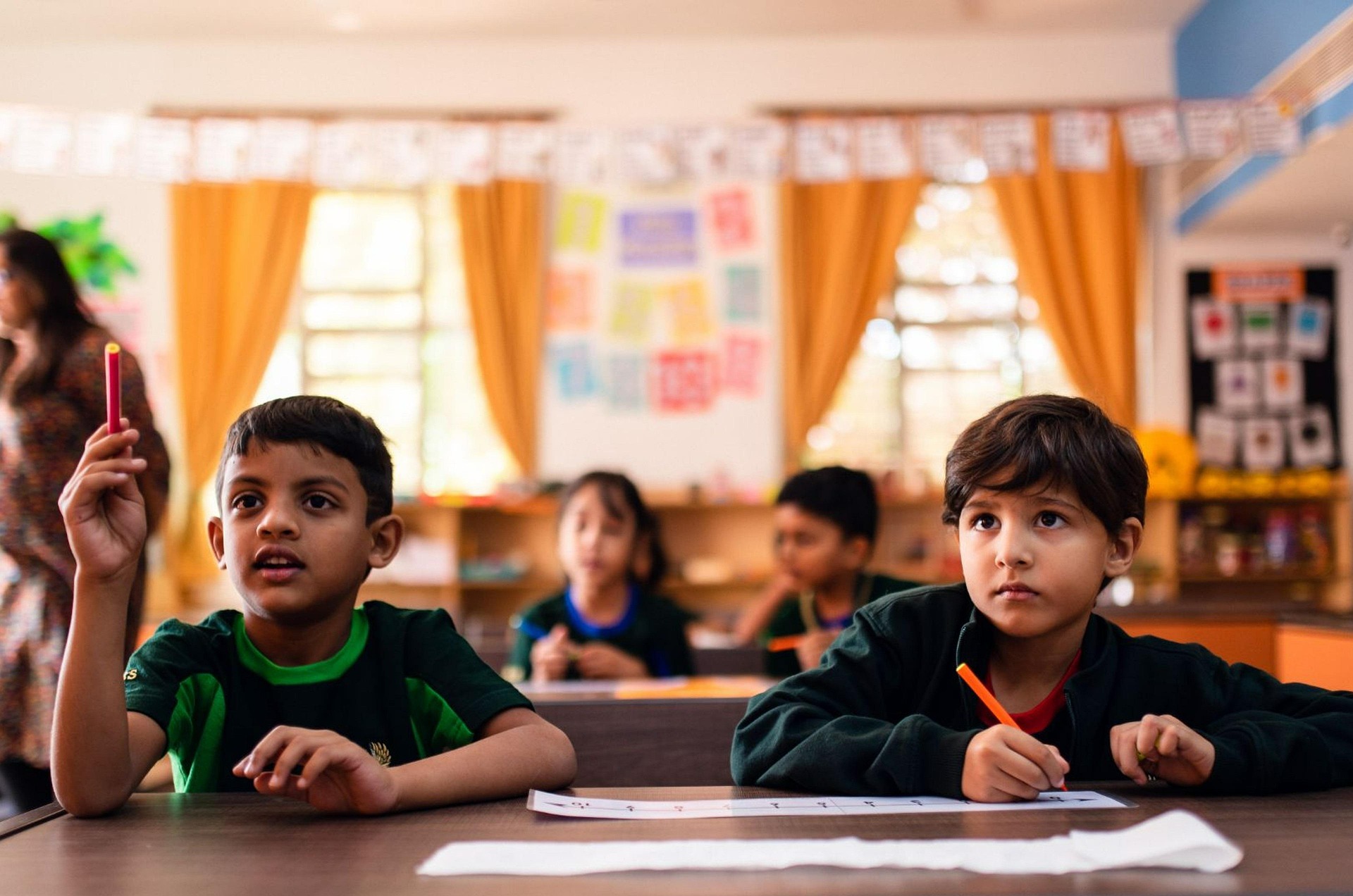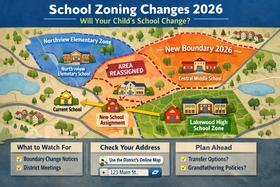How Scaffolding Could Change the Way Your Child Learns
It is a teacher’s job to shape the minds of the nation’s youth, teaching them the concepts and skills they’ll need to become functional adults.
- Early childhood education is critical.
- It can affect everything from a student’s future academic success to his mental and emotional health.

Every child learns differently. His educational success depends, in large part, on his teachers and their method of instruction.
- Children learn by listening, observing, exploring, and asking questions.
- The more a child understands the “what” and “why” of the lesson, the more motivated and engaged they will be.
- Scaffolding is an instructional tool teachers use to develop critical thinking skills and other skills they need to work more independently.
What is Instructional Scaffolding?
In higher education, students are often left to their own devices to take a project from the assignment phase to completion.
- A college professor might give a classroom full of students a research article and ask them to write a detailed essay about the critical topic.
- As the professor in this example, you might expect mixed results.
- Some students are more than capable of completing a project with minimal instruction, while others might struggle.
- In many ways, it comes down to how the student was taught in his early education years.
Instructional scaffolding is a teaching method that breaks up a lesson or project into smaller pieces, using some underlying structure or a specific tool to guide the student.
- The example used above is the opposite of a scaffolding lesson. So, what does scaffolding look like?
- According to the Iris Center, instructional scaffolding is a process through which teachers add support for students to enhance their learning and aid them in mastering tasks.
- It systematically builds on student experience and existing knowledge while learning new skills.
- One method is for the teacher to model or demonstrate how to complete the task before stepping back, offering student support as needed.
- As the student masters the tasks, the support is removed.
The term “scaffolding” was first used by psychologist and instructional designer Jerome Bruner during the 1960s.
- The idea is that when students are given proper support when learning something new, they stand a better chance of later using that knowledge independently.
- In the medical field, this is exemplified by the phrase “see one, do one, teach one.”
- Observing a procedure prepares the student to perform it independently, broadening their understanding and building experience to pass that knowledge along or use it again later.
This video offers some strategies for using scaffolding in the classroom.
What Does Scaffolding Look Like in Contemporary Education?
In a scaffolded lesson, the teacher begins teaching at a level the student can understand and then builds on that understanding.
- Next, she presents the problem and talks the student through the process of solving it.
- By combining actions, images, and language, the teacher shows the student how to solve the problem and then guides the student to do it himself.
Here is a step-by-step example of scaffolding in action:
- The teacher presents a problem or task and then completes it, thinking aloud and talking students through the process to complete it.
- She repeats the process a few more times, asking her students questions.
- Each time a student answers a question, right or wrong, he receives a positive response to encourage continued participation.
- The task is repeated as more students are asked to respond to the questions.
- When the students appear to have gained understanding, they are asked to complete a new task or problem.
- As the students continue to solve problems, the teacher checks their understanding and provides more support if needed.
- Once the student demonstrates knowledge, the teacher steps back and lets the student work independently, providing support as needed.
Scaffolding can be used at all levels of education, starting as early as preschool. In early childhood education, scaffolding helps children master basic concepts they’ll build on as their education continues. At the college level, scaffolding can help students strengthen the skills they’ll need after they graduate and enter the workplace independently.
Scaffolding vs. Differentiation
Before we discuss the benefits of scaffolding for student success, it is important to note the difference between scaffolding and differentiation.
- Both methods involve identifying the student’s current level of mastery or understanding and making adjustments to further his education.
- Both methods can be used with diverse groups of students and are designed to help move student learning from where it is to where it needs to be.
Differentiation refers to teaching techniques and lesson adaptations that accommodate a group with diverse learning needs.
- When using a method of differentiated instruction, teachers might assign students a different task to match their current understanding and ability better.
- The teacher might also provide the students with the option to choose from several tasks, allowing them to choose the one that best suits their knowledge or interests them more than the others.
Scaffolding, however, involves breaking the project into discrete parts and providing the assistance needed to learn each part.
- Using the example of a reading assignment, differentiation might involve giving some students entirely different texts.
- Scaffolding might involve giving students an excerpt of the larger text and engaging them in discussion to improve their understanding of concepts and vocabulary before assigning the full text.
- In some classrooms, teachers can blend scaffolding and differentiation seamlessly.
- Both methods are useful in public school settings where any class might contain a diverse array of learning styles and different levels of mastery.
The Benefits of Scaffolding for Student Success
When it comes to childhood education, a teacher’s job is to teach core concepts and important skills.
- More importantly, however, teachers help children learn how to learn.
- Scaffolding is a very effective way to guide students in learning new concepts without simply presenting them for memorization.
- It encourages the development of critical thinking and other skills children will need throughout their lives, not just in furthering their education.
Here are some of the critical benefits of instructional scaffolding:
- It improves engagement and motivation. Scaffolding involves students in the learning process and can be adjusted to each child’s needs. It keeps the children more focused and engaged during the lesson, enhancing their understanding of the concept on top of the specific problem.
- It helps educators identify zones of proximal development, which is the range of knowledge or abilities a student can do with assistance but can’t yet do independently. By actively engaging with students, teachers can more easily identify the student’s zone of proximal development and use it to inform their teaching.
- It reduces anxiety and uncertainty during learning. Asking a student to complete a too-difficult task induces anxiety that can hinder the learning process. Scaffolding allows the teacher to adjust the lesson in response to student feedback, resolving uncertainties and eliminating potential anxiety.
- It builds momentum within the lesson. To be effective, scaffolding involves asking questions to gauge the student’s understanding. Wrong answers can be met with immediate assistance when it is needed most, building momentum and guiding the learning experience.
Scaffolding can be applied to a wide range of concepts and tasks. It is also customizable for different levels of education and various learning styles. Read on to learn some specific ways scaffolding can be implemented in education.
7 Ways to Implement Scaffolding in Education
There is no specific roadmap for implementing scaffolding because it varies from one lesson to another and among different groups of students. Scaffolding is more of a concept teachers use to guide their students’ understanding and help them develop their own critical thinking skills. However, there are certain things you can try to implement scaffolding into an assignment or lesson.
Here are some ways to implement scaffolding into childhood education:
- Model or demonstrate. Show your students an example of what they’ll be learning or doing. Start by showing them an example of the finished product, then walk them through the steps, verbalizing your thought process as you demonstrate.
- Example: Have your students gather in a small group surrounded by a larger group in two circles. Have the smaller group in the center engage in an activity, showing the larger group how it’s done.
- Break it into bite-sized pieces. Break larger concepts down into more manageable pieces, teaching mini lessons to progressively move students toward a deeper understanding.
- Example: Have students read an excerpt from a larger text and discuss vocabulary and core concepts before reading the larger text, using the understanding they’ve already developed.
- Teach things in multiple ways. Every student learns differently, so support different learning styles by approaching new concepts from multiple angles. Show and tell your students various ways to complete a task and let them try it for themselves using the method of their choice.
- Example: Teach students to tie their shoes by showing them a completed bow and multiple ways to tie one. Let the students practice on their own, guiding them as needed.
- Make time for verbal processing. No matter their learning style, all students need time to process new information. Verbally communicating the idea and articulating their understanding can help the learning process.
- Example: Introduce a new task or concept and ask students to complete it in pairs or small groups, talking as they work through it.
- Pre-teach key concepts and vocabulary. Give students the tools they need to learn by pre-teaching things they’ll need to understand the bigger picture. Once the students understand the smaller pieces of the puzzle, they’ll be better able to see the larger picture.
- Example: Introduce key vocabulary words from the text and present them in pictures or explain them in context. Give students time to discuss in small groups before tackling the whole text.
- Use visual aids. Visual aids like pictures and charts can help students visually represent their ideas to organize their understanding and grasp tricky concepts like sequencing or cause and effect. It is a tool to shape and guide student thinking.
- Example: To help students understand the difference between two things, help them draw out a Venn diagram to highlight the individual concepts and how they are similar and different.
- Check for understanding. While students are working through a complex text or a new concept, pause throughout to check their knowledge and redirect focus if needed. Ask open-ended questions, guiding students to explore their understanding.
- Example: Pause after reading a section of the text to give students time to process, then ask a guiding question, pausing again for thought before taking answers.
The key to scaffolding is to set your students up for success. The goal is for the student to learn or understand the lesson—how they get to that point may not be a straight line. The teacher’s job is to provide checkpoints and guidance along the way to understanding.
Tips to Make Scaffolding Successful
Understanding the concept of scaffolding in education is one thing, but implementing it is another. Putting scaffolding to work in a classroom setting will look completely different from one class to another, depending on the students in the class. Here are some general tips for using scaffolding creatively and efficiently in the classroom:
- Model the process of error detection and correction. Making mistakes is part of learning, but students must learn to identify and correct mistakes. As a teacher, you might simulate getting stuck with the problem and then show your students how you might talk through the situation to find the solution instead of giving up.
- Encourage students to become teachers. Many things can best be learned by doing. Once you’ve modeled the task for your students and helped them complete it themselves, encourage students who have completed the ask to help others who are still struggling. It will further their understanding of the concept and may help the struggling student see the problem differently.
- Help students organize their thoughts. Giving students time to think is an essential step in the learning process. After you describe and model a concept, allow students to organize their thoughts. You might ask them to create a word web or write an outline to help them focus in on the task at hand and identify areas where they still need guidance.
- Try the task scaffolding method. For more complex concepts and tasks, it may help to start with a list of steps – this is another method of breaking the lesson down into smaller parts. Separate each step, verbalizing your process as you complete the task and showing how one step leads into or builds on the other.
- Make the lesson relevant and exciting. When teaching new concepts to students, it helps to start with something familiar or interesting to the student. If you can incorporate real-world examples, you can fast-track your students’ understanding. For example, a student who loves birds is more likely to focus on a text about parrots than one about an abstract concept.
- Don’t put a time limit on the lesson. Everyone learns in their own time, and putting a strict time limit on difficult lessons can hinder the learning process. You must give your students time to think and work through the process, even after you’ve modeled it. As you guide your students to complete the task themselves, pause as often as necessary to provide additional instruction or ask a guiding question.
Conclusion
Instructional scaffolding is a powerful tool that can transform the way students learn by providing tailored support and fostering independence. By breaking down complex tasks into smaller steps and offering guidance as needed, teachers can help students build confidence and develop essential skills. As scaffolding is adaptable to different learning styles and levels, it can be effectively integrated into various educational settings, from preschool to higher education.
Questions? Contact us on Facebook, Instagram, and YouTube. @publicschoolreview
#InstructionalScaffolding #TeachingMethods #StudentSuccess #LearningStrategies #EducationInnovation














